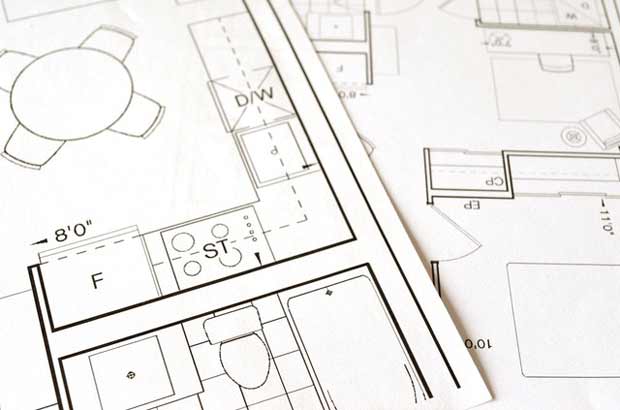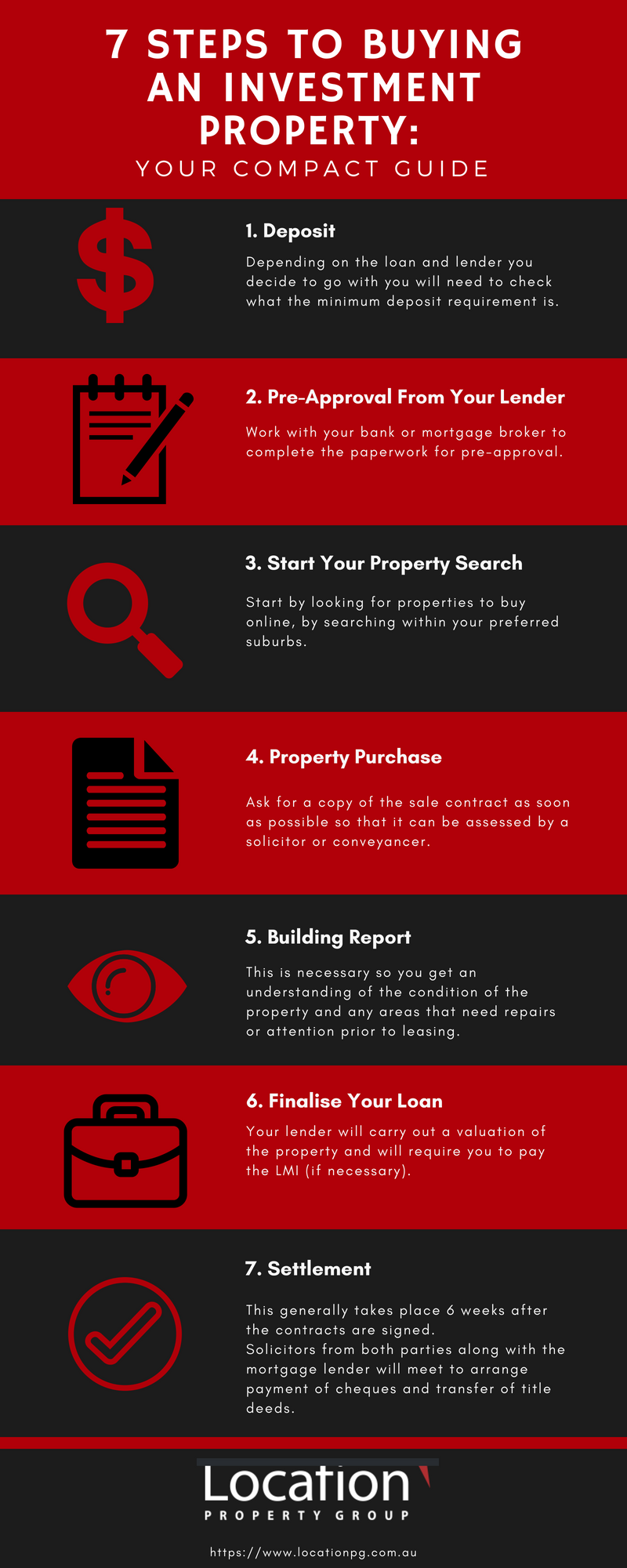7 Steps to Buying an Investment Property: Your Compact Guide
An investment property is a great way to get on the property ladder or to start your investment portfolio.
These steps outline what you can expect when purchasing a property:
1. Deposit
Save for your deposit as soon as you can.
Depending on the loan and lender you decide to go with you will need to check what the minimum deposit requirement is – usually 10%.
If you already own a property you may have equity that can cover this cost.
You can check how much equity you have by contacting your mortgage provider.

Demonstrating real savings (eg: 5% – check with the lender) is usually required by the lender.
This means saving the same or a similar amount of money each month.
This proves that you can save and that you have the income and lifestyle to be able to save over time.
Your Loan to Value Ratio (LVR) will be checked by the lender prior to a loan offer.
LVR less than 80% is considered high risk, therefore the lender would require you to take out Lender’s Mortgage Insurance (LMI).
Offering 20% or more for the deposit, or using the equivalent in equity from another property, means that you will not have to pay Lender’s Mortgage Insurance (LMI).
2. Pre-Approval From Your Lender
Work with your bank or mortgage broker to complete the paperwork for pre-approval.
This step will ensure that you have everything in place to meet the lending criteria for the loan.
At this stage, you will have confirmation on how much you can borrow and you can put in an offer on a property.
3. Start Your Property Search
Do your research to find the best performing suburbs, not necessarily the suburb where you would like to live yourself.
Look for properties to buy online, within these areas.
You can search by maximum price and number of bedrooms to further refine your search.
Check that the area has all the local amenities and transport connections that might be appealing to a prospective tenant so that you can maximise your rental income.
When purchasing a unit, check where it is situated within the unit block: for example, a ground floor unit may be less appealing for tenants for security reasons.
Look at how much light the unit gets and the accessibility: does the block have a lift or just stairs?
The location of the unit within the block is important as a negotiating point for a higher sale price if you decide to sell.
If you purchase in a large unit block or complex, expect to pay higher strata fees than a small block with no lift access.
Talking to one of our property experts for their advice and knowledge is a great way to simplify the process.
4. Property Purchase
Ask for a copy of the sale contract as soon as possible so that it can be assessed by a solicitor or conveyancer.
You will need to pay the deposit straight away if you are purchasing at auction. There is no cooling off period associated with auctions.
When buying privately, you may be asked to pay a pre-deposit amount (usually around 0.25%) to show that you are serious about purchasing the property.
Once the contracts have been exchanged by yours and the seller’s solicitors and the deposit has been paid, the property will be secured.
The seller will not be able to accept any other offers.
A cooling off period applies in NSW for 5 days, where you are able to cancel the sale (in writing). However, you would forfeit 0.25% of the purchase price.
The cooling off period can be waived.
5. Building Report
Arrange the building inspection during the cooling off period.
The building report describes the condition of the property and any areas that need repairs or attention.
Knowledge of any issues with the property can give you negotiating power.
You may be able to negotiate a lower the price or request that the owner fixes the issue.
6. Finalise Your Loan
The lender will carry out a valuation of the property.
Lenders Mortgage Insurance or LMI (if applicable) needs to be paid prior to authorising the loan. Along with any other conditions specified in the conditional acceptance (pre-approval).
7. Settlement
This generally takes place 6 weeks after the contracts are signed.
Solicitors from both parties along with the mortgage lender will meet to arrange payment of cheques and transfer of title deeds.
This is when you arrange a final inspection of the property, before the settlement, to ensure that the property is in the condition that you expect it to be.
Ready to start your property search?
Take a look at our property listings or contact our office on 02 9439 3188 if you would like to speak to one of our advisers about your investment strategy or off the plan options.
Once you have purchased the property we can assist you by finding tenants and managing the property, if required. If the property is outside of NSW we can also recommend property managers in different states.




